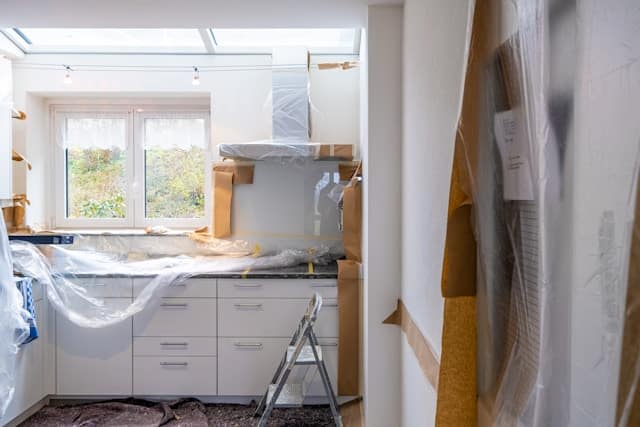How to Plan a Home Renovation Project Using Sustainable and Recycled Materials?

Renovating your homes is a task that requires considerable planning and careful deliberation. With the increasing emphasis on sustainability, eco-friendly practices and designs have become an essential part of the home renovation process. Utilising sustainable and recycled materials not only helps you to contribute positively to the environment but also creates an efficient, energy-saving, and beautiful space. In this article, we will guide you through a step-by-step process of planning your home renovation project while focusing on sustainability and waste minimization.
Choosing Sustainable Building Materials
When embarking on a home renovation project, your first step should be to select sustainable materials. These materials are typically sourced from ethical suppliers and are produced with a minimal carbon footprint. Your choice of building material will significantly impact the sustainability and energy efficiency of your home.
A lire aussi : What Are the Best Smart Technologies for Streamlining Household Chores?
Wood is a popular sustainable building material. When sourced responsibly, it can provide a durable and eco-friendly option for your renovation project. Bamboo, for instance, is a rapidly renewable material that delivers both strength and aesthetic appeal.
Recycled metal and glass are also excellent sustainable choices. These materials are highly durable and require less energy to produce compared to their new counterparts. Using recycled materials not only lowers your environmental impact but also contributes to waste reduction.
Sujet a lire : How to Set Up a Home Observatory for Astrophotography with Limited Backyard Space?
Incorporating Energy Efficient Design
Energy efficiency is a cornerstone of sustainable home renovation. An energy-efficient design will help reduce your energy consumption, thereby lowering your carbon footprint and saving on utility bills.
Start with improving your home’s insulation. Proper insulation will keep your house warm in winter and cool in summer, reducing the need for air conditioning or heating. You can use recycled materials such as denim or cellulose for insulation.
Invest in energy-efficient appliances and LED lighting. These devices consume less energy and last longer than traditional models. Also, consider installing a programmable thermostat to manage your home’s temperature more effectively.
Remember, large windows and skylights enhance natural lighting, reducing the need for artificial light during the day. Furthermore, they help in maintaining a healthy indoor air quality by facilitating better ventilation.
Water Conservation Measures
Another critical aspect of your home’s sustainability is water conservation. Several design features and practices can help you reduce water waste in your home.
In the bathroom, consider installing low-flow fixtures such as showerheads and toilets. These devices use significantly less water than conventional models without compromising performance. Also, look into greywater systems that recycle water from your sinks and showers for use in toilets and gardens.
For your garden, opt for native plants that require less water to thrive. Where possible, install a rainwater harvesting system to collect and store rainwater for use in your garden or household chores.
Waste Management and Recycling
Proper waste management and recycling are essential to a sustainable home renovation project. Aim to minimize waste during the construction process and recycle as much as possible.
Rent a dumpster for construction waste and hire a recycling service to sort and recycle materials. Many materials such as wood, metal, and concrete can be recycled or reused in other construction projects.
You should also consider donating unwanted items and fixtures to local charities or selling them on online platforms. This not only reduces waste but also helps others in need.
Enhancing Indoor Air Quality
Maintaining good indoor air quality is vital for the health and comfort of the occupants. Several sustainable practices and materials can help improve your home’s indoor air quality.
Opt for low-VOC (Volatile Organic Compounds) paints and finishes. These products release fewer pollutants into the air, thus improving indoor air quality. Also, look into natural flooring options such as cork or linoleum, which are not only sustainable but also release fewer toxins.
Regular maintenance of your HVAC system will ensure it runs efficiently and contributes to better air quality. Include plenty of plants in your home design to naturally purify the air and add a touch of nature to your living space.
By carefully planning your home renovation with these sustainable practices, you can create a comfortable, beautiful, and eco-friendly living space that will last for years to come. Remember, every small step towards sustainability contributes significantly to a healthier environment and a greener future.
Utilizing Solar Energy
Integrating solar energy into your home renovation project is an effective way to increase its energy efficiency and reduce your environmental impact. Solar panels, once installed on your roof, can generate a significant amount of electricity that could power your entire home.
Solar energy is a renewable source of energy that can significantly reduce your reliance on fossil fuels for power. This means you are contributing less to pollution and greenhouse gas emissions, fostering a cleaner and greener environment. Solar panels have become more efficient and less expensive over the years, making them an increasingly attractive option for homeowners.
In addition to solar panels, solar water heaters can also be a valuable addition to your home. These devices use the sun’s energy to heat your home’s water, reducing the need for conventional water heaters that consume a significant amount of energy. Not only does this lower your energy consumption, but it also reduces your energy bills.
Remember, even though the initial cost of installing solar panels and solar water heaters might be relatively high, the long-term savings in energy costs make them a worthy investment. Moreover, many governments offer incentives and tax breaks for homes that use solar energy, which can further offset the initial cost.
Green Landscaping
The exterior of your home also presents opportunities for sustainable renovations. Green landscaping is a set of practices aimed at creating an environmentally friendly home exterior that is attractive, sustainable, and has a low impact on the environment.
For instance, you can use native plants in your home’s landscape design. Native plants are adapted to the local climate and soil conditions, which means they require less water and maintenance than exotic species. This not only saves you time and money but also reduces water consumption and the need for harmful pesticides.
Implementing composting in your home is another excellent green landscaping strategy. Composting involves recycling organic waste from your home, such as vegetable peelings and grass cuttings, into nutrient-rich soil. This reduces the amount of waste going to landfills and provides a natural fertilizer for your garden.
Rain gardens are an innovative landscaping feature that can help manage stormwater runoff. They are depressions planted with native plants that can tolerate both dry and wet conditions. Rain gardens capture rainwater runoff from your roof, driveway, or yard and allow it to infiltrate into the ground, reducing water pollution.
Conclusion
Planning and executing a sustainable home renovation project is a commitment to the environment and future generations. By choosing sustainable materials and employing energy-efficient design and practices, you can significantly reduce your home’s environmental impact.
Remember to incorporate elements such as solar energy, water conservation, waste management, and green landscaping in your renovation plans. These features not only make your home more sustainable but also improve its aesthetic appeal and increase its value.
While embarking on a green home renovation project might require more time and research, the benefits in terms of cost savings, improved comfort, and a healthier environment are well worth the effort. So, as you plan your next home improvement project, consider going green. Your planet will thank you!
